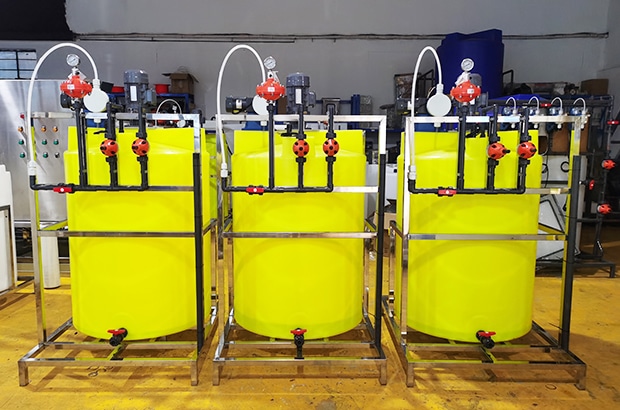Marine sewage treatment plant is an essential system installed on ships and offshore platforms to treat wastewater generated from toilets (black water) and sometimes from showers and sinks (grey water). As global attention to marine pollution continues to grow, modern vessels are under increasing pressure to comply with international regulations like MARPOL Annex IV, which strictly governs how and where sewage can be discharged.
Why Do Ships Need Sewage Treatment Systems?
Ships are like floating cities — generating waste from hundreds or even thousands of people onboard. Untreated sewage contains harmful bacteria, organic matter, and nutrients that can severely impact marine ecosystems. A marine sewage treatment plant ensures that the discharge is safe for the environment and compliant with international laws.
Without a treatment system, vessels face hefty fines, port entry restrictions, and reputational damage.
How Does a Marine Sewage Treatment Plant Work?
A standard system typically includes the following stages:
- Collection: All black water is first collected in a sewage holding tank.
- Biological Treatment: The sewage enters an aeration tank where aerobic bacteria break down organic matter in the presence of oxygen.
- Sedimentation: The treated wastewater flows into a settling tank where solids sink and are separated from the liquid.
- Disinfection: The clarified liquid is disinfected using chlorine or UV light to kill pathogens before discharge.
- Sludge Handling: Solids are pumped into a sludge tank for further treatment or onshore disposal.
Some advanced systems use Membrane Bioreactors (MBR) to filter the water even further, achieving near drinking-water quality.
Discharge Standards for Harmless Sewage Treatment on Ships (MARPOL Reference)
According to IMO MARPOL Annex IV, a certified marine sewage treatment plant (STP) must meet the following key discharge limits:
| Parameter | Standard Limit | Description |
| BOD₅ (5-Day Biochemical Oxygen Demand) | ≤ 50 mg/L | Indicates the level of organic pollution. Lower is better. |
| SS (Suspended Solids) | ≤ 50 mg/L | Affects water turbidity; must be minimized. |
| E. coli Count | ≤ 250 CFU/100mL | Indicates microbial contamination; important for human health safety. |
| pH Value | Between 6.0 and 8.5 | Effluent must be environmentally neutral or slightly alkaline. |
| Visible Solids | None | No visible solid particles allowed in the discharge. |
These limits apply to IMO-approved sewage treatment systems and are mandatory for legal discharge at sea.
MARPOL Annex IV Regulations
MARPOL Annex IV requires that:
- Untreated sewage cannot be discharged within 12 nautical miles of the nearest land.
- Treated sewage (via an approved STP) can be discharged at least 3 nautical miles from land.
- Vessels must carry an International Sewage Pollution Prevention Certificate (ISPPC).
Types of Marine Sewage Treatment Systems
| Type | Description |
| Biological Aerobic Systems | Uses air and bacteria to decompose waste organically. |
| Chemical Treatment Units | Involves dosing with chemicals for breakdown and disinfection. |
| Membrane Bioreactor (MBR) | Combines biological treatment with membrane filtration for higher water quality. |

Benefits of Marine Sewage Treatment Plants
- Environmentally friendly and compliant
- Produces cleaner effluent
- Low maintenance and automatic operation
- Compact design suitable for space-constrained ships
- Avoids regulatory penalties and port issues
Who Needs It?
Marine sewage treatment plants are essential for:
- Cargo ships and tankers
- Cruise ships and yachts
- Offshore oil & gas platforms
- Naval vessels and patrol boats
Summary
As the maritime industry moves toward greener and cleaner operations, marine sewage treatment plants play a pivotal role in reducing the environmental footprint of ships. Choosing the right STP system not only protects the oceans but also ensures smooth sailing in terms of compliance and operations.
KUOSI, the preferred choice for water treatment equipment. Our extensive product line includes filter presses, screw presses, paddle dryers, dissolved air flotation systems, rotary drum filters, bar screens, screw conveyors, roots blowers, dosing systems, ozone generators, sodium hypochlorite generators and more. Choose KUOSI for comprehensive solutions to your water treatment needs. Feel free to contact us anytime.
